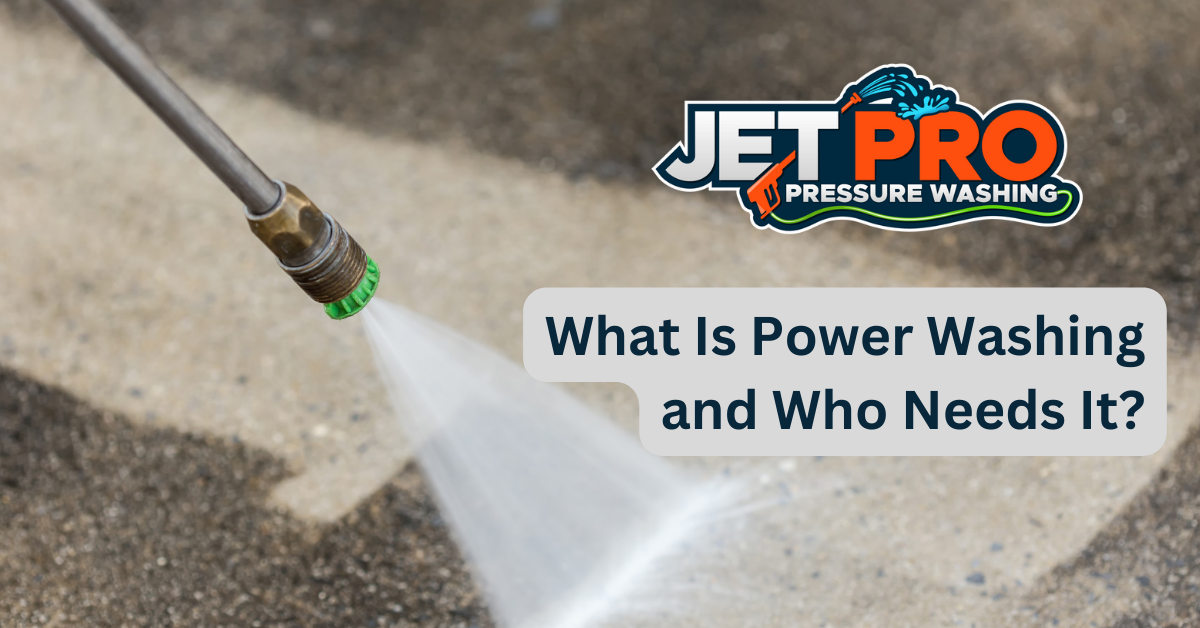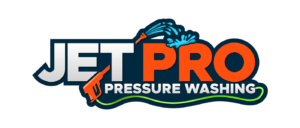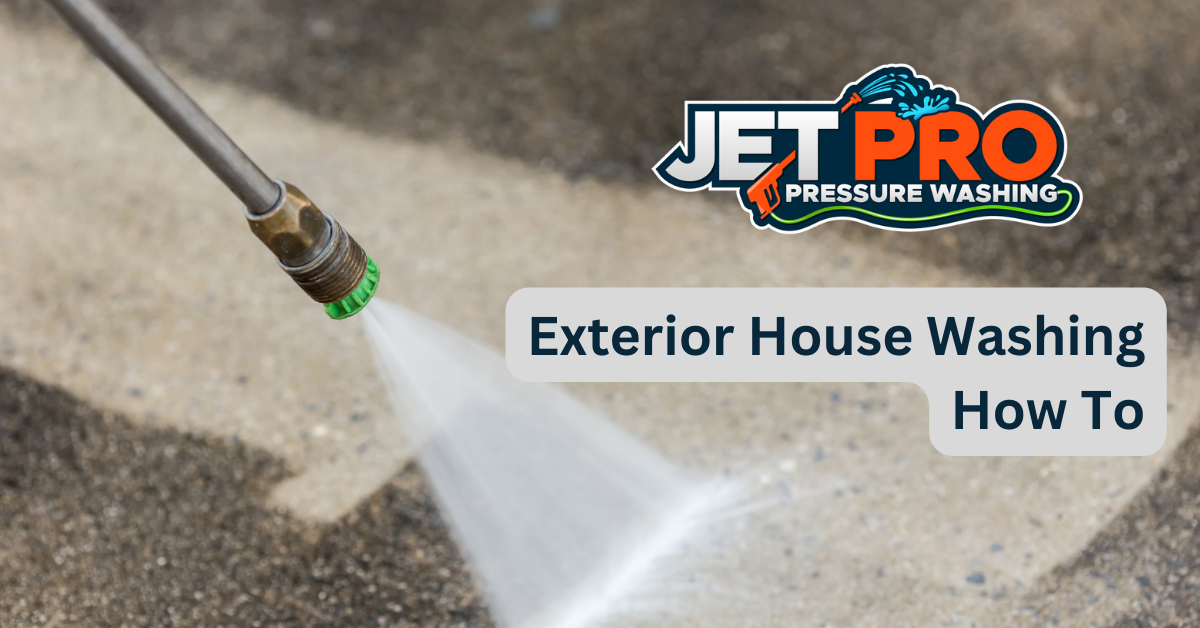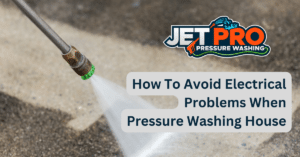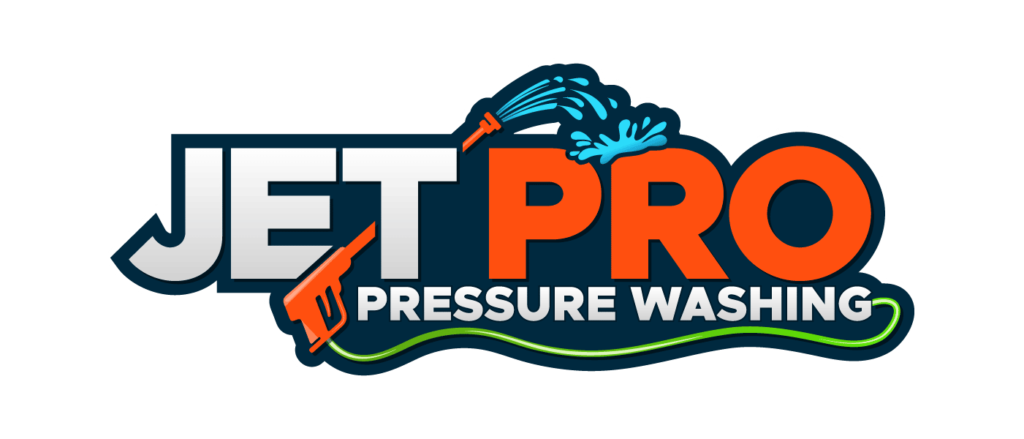Looking for a powerful cleaning technique to get rid of dirt, grime, and other debris from surfaces? Look no further than power washing! This method is perfect for a variety of businesses, and you can learn more about it in our guide. If you’re looking for a company to handle your power washing needs, consider contacting a professional power washing service – they’ll make your surfaces look like new with the power of their equipment! Wondering what type of businesses need power washing?
Additionally, if you’re wondering how long does cement need to cure before power washing, we’ve got you covered. This article will explore the basics of power washing, including the benefits, materials suitable for power washing, preparation, and safety considerations. And if you’re interested in window cleaning, be sure to check out our related article for more information.
Overview of Power Washing
Pressure cleaning is a process of applying high-pressure water to surfaces in order to remove dirt and debris. Power washing utilizes a high-pressure pump to increase water pressure and velocity. This is used to remove stubborn contaminants such as dirt, grime, and mildew from different surfaces.
Pressure washing can be used to clean a variety of surfaces including buildings, decks, driveways, patios, and sidewalks. Additionally, power washing can be used for more intricate cleaning tasks such as removing paint, gum, and stains.
Power washing can be done with either hot or cold water. Cold water is used for general cleaning and hot water for more difficult cleaning tasks. Hot water helps to dissolve any grease or oil that may have accumulated on the surface. This makes it easier to remove with the power washer. Additionally, hot water helps to increase the effectiveness of detergents and cleaning solutions.
Power washing involves taking the necessary safety precautions to protect against injury or property damage. This includes using the correct pressure setting on the power washer, wearing protective gear such as goggles and gloves, and avoiding contact with electrical sources. Additionally, it is important to use the correct cleaning agents and detergents for the job. Using the wrong cleaning agents can cause damage to the surface or the environment.
Benefits of Power Washing
Power washing is an effective and efficient way to clean a variety of surfaces. It is often used for both aesthetic and preventative reasons, because it can make surfaces look better and can help prevent damage.
Power washing can quickly and easily remove dirt, debris, and other contaminants from a variety of surfaces, making them look more appealing and helping to prevent further damage from occurring.
Quick and Efficient Cleaning
Utilizing high-pressure water jets, quick and efficient cleaning can be achieved. Power washing is a method of cleaning that is fast, effective, and often times cost effective.
It can clean a variety of surfaces including concrete, asphalt, stone, and wood. This method is popular because it is much faster than traditional methods, such as scrubbing or hand washing.
It also eliminates the need for harsh chemicals, as it relies solely on water pressure and temperature to clean. The water pressure and temperature can be adjusted to ensure that the proper amount of cleaning power is applied to the surface without causing any damage.
This makes power washing an ideal solution for a wide range of cleaning needs.
Improved Aesthetics
Power washing can provide improved aesthetics to a variety of surfaces, making it an ideal solution for a wide range of cleaning needs. The process applies a powerful stream of water to remove dirt, dust, grime, and other debris that can accumulate on a surface over time. Power washing is also effective at removing stains, such as oil and paint, as well as graffiti and other marks.
The process can also be used to remove mold, mildew, and algae buildup. Power washing can make a surface look brand new, and the results can last for a long time. The process is also faster and more efficient than manual cleaning, making it a popular choice for both residential and commercial applications.
Power washing can also be used to prepare a surface prior to painting or staining, and it is often used to restore the appearance of decks, siding, fences, and other outdoor structures.
Prevention of Damage
By utilizing the power of pressure, power washing can be used to prevent damage and corrosion to surfaces, acting as a protective shield against the elements. It is particularly effective at removing dirt, grime, mildew, and other substances that can cause oxidation and discoloration over time. Power washing also helps to extend the life of surfaces, including those that are exposed to the elements such as decks, patios, and other outdoor structures. This is accomplished by removing any debris or contaminants that can lead to wear and tear.
In addition, it can help to keep surfaces clean and free of bacteria, mold, and other forms of fungi. Power washing is also useful for preventing the growth of weeds and other plants that can degrade the quality of surfaces. The pressure of the water helps to break up soil and remove unwanted vegetation, thereby helping to keep surfaces looking their best.
Power washing can also be used to help protect surfaces from the effects of salt water, which can cause corrosion and rusting. Lastly, power washing can be used to protect surfaces from the buildup of dust and other particles, which can lead to discoloration and staining.
Materials Suitable for Power Washing
The use of high-pressure water to clean surfaces is known as power washing, and the materials suitable for this process are discussed in this section. Generally, power washing is best suited for hard, nonporous surfaces such as brick, stone, concrete, and metal.
Prior to the power washing process, the surface should be inspected for any damage or any loose material that could be impacted by the high-pressure water. Soft materials such as wood, plastic, and certain types of asphalt should not be power washed, as the pressure of the water could cause damage to the surface.
Power washing can be used to remove dirt and debris from the surface, as well as paint, stains, and other surface contaminants. Pressure washing is also an effective way to remove mildew, mold, and algae from a surface, as long as the correct pressure and settings are used.
The water used in power washing should be at least 140°F, as this temperature is effective for killing bacteria and fungus. The power washing process is effective for cleaning many types of surfaces, although it is important to consider the material of the surface, as well as the pressure and temperature of the water.
Proper safety and protective gear should also be used when power washing, and it is important to follow all manufacturer’s instructions when using a pressure washer.
Preparation for Power Washing
Prior to power washing, it is essential to properly prepare the surface to ensure optimal results. This includes cleaning the surface of any debris, such as dirt, oil, and grease.
Additionally, it is important to consider any potential hazards that may be present, such as electrical wires or pipes. Depending on the type of surface being cleaned, it may also be necessary to use protective gear, such as protective eyewear and gloves.
It is important to carefully read all instructions regarding the power washer. This includes not only the instructions on the machine itself, but also any safety instructions provided by the manufacturer. Additionally, it is important to inspect the power washer for any signs of damage, such as frayed wires or loose connections.
Before beginning power washing, it is important to select the appropriate nozzle for the job. Different nozzles provide different levels of pressure and water flow, and the wrong nozzle can cause damage to the surface. Additionally, it is important to ensure that the pressure washer is connected to a water source with sufficient water pressure.
Following these steps will ensure that the power washing job is completed safely and efficiently.
Safety Considerations
Before beginning the power washing process, it is important to consider safety precautions. Power washers can produce a stream of water at high enough pressures to cause serious injury or damage to property. Therefore, it is important to take the necessary steps to ensure the safety of both the operator and any bystanders.
To begin with, it is important to properly inspect the power washer before use. This includes checking all hoses and other components for any signs of wear or damage. It is also important to ensure that the power washer is set to the appropriate pressure for the job, as using too high of a pressure can cause damage to the surface being cleaned.
In addition, it is important to take the necessary safety precautions while operating the power washer. This includes wearing protective clothing and goggles, as well as maintaining a safe distance from the nozzle at all times. It is also important to be aware of bystanders and any potential hazards that may be in the area.
When the job is finished, it is important to turn off the power washer and disconnect any hoses. Taking the necessary safety precautions can help to ensure a safe and successful power washing experience.
Frequently Asked Questions
How much does power washing cost?
Power washing is a process of using high-pressure water to clean surfaces, such as buildings, decks, and driveways. The cost of power washing depends on the size of the area to be cleaned, the type of surface, and the amount of time it will take to complete the job.
Generally, power washing costs range from $0.15 to $0.50 per square foot, with an average cost of $0.35 per square foot. The cost of power washing can also vary depending on the type of surface being cleaned, with more difficult surfaces, such as brick or stucco, costing more than easier surfaces, such as vinyl siding.
What type of pressure washer should I buy?
Pressure washers are devices used to remove dirt, dust, grime, and other deposits from surfaces. Choosing the right pressure washer depends on the job at hand and the surface to be cleaned.
For residential use, a gas-powered pressure washer with a minimum of 2,000 psi and 2.5 gallons per minute (GPM) is recommended. For larger jobs, a gas-powered pressure washer with up to 4,000 psi and 4 GPM is ideal. Pressure washers with higher pressure and GPM are better for tougher cleaning jobs.
Safety gear, such as eye protection, work gloves, and long pants and sleeves, should be worn when operating a pressure washer.
How often should I power wash?
Power washing is a process of cleaning surfaces such as concrete, wood, siding, and decks using a pressure washer. The frequency with which a surface should be power washed depends on a number of factors, including the type of material, its age, the amount of dirt and debris, and the weather conditions.
For example, wooden decks should be power washed at least once a year, while concrete surfaces may require power washing every two to four years. When power washing, it is important to use a pressure washer with the correct pressure level to avoid damaging the surface.
Are there environmental considerations when power washing?
Power washing is a technique used to clean surfaces, such as buildings, decks, and driveways, by using a high-pressure stream of water.
While power washing can be an effective way to clean surfaces, there are environmental considerations to take into account. The high-pressure stream of water can cause erosion, and the chemicals used in the process can be harmful to the environment.
Additionally, the runoff from the power washing can contain pollutants that can contaminate nearby water sources.
It is important to take these environmental considerations into account when power washing.
Are there different techniques for power washing?
Power washing is a technique that uses pressurized water to clean a variety of surfaces. There are several different techniques that can be employed in power washing, such as cold water pressure washing, hot water pressure washing, and soft washing.
Cold water pressure washing is the most commonly used technique, and is used to clean surfaces such as concrete, stone, and brick.
Hot water pressure washing is used for surfaces that are more difficult to clean, such as asphalt and rubber.
Soft washing is a lower pressure technique that uses a mixture of detergents and water to clean surfaces as well as kill bacteria and fungi.
Conclusion
Power washing is an effective way to rid surfaces of dirt, grime, and other contaminants. Its benefits include removing mold, mildew, and algae, as well as restoring surfaces to their original state.
When selecting a material for power washing, it is important to consider its strength and durability. Preparation for power washing is essential, and it is important to ensure that safety precautions are taken.
It is like a gust of fresh air, clearing away the dirt and grime of the past to make way for a new beginning. Power washing is a powerful tool that can be used to restore surfaces to their original state, providing a clean and healthy environment.

